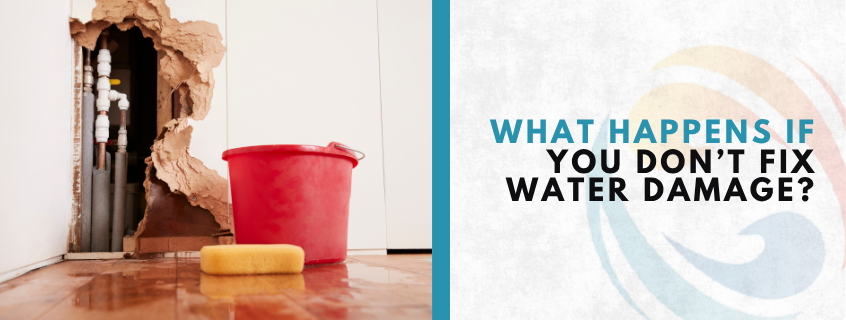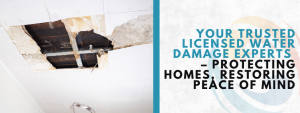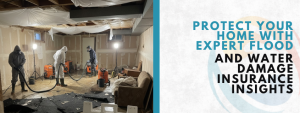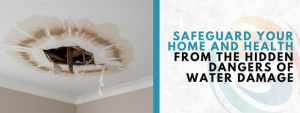
Waking up and stepping out of bed, your feet splash into a soggy carpet. A slight stain creeps up the wall. It doesn’t seem like much at first—just a little wet patch. But ignoring that small issue can turn into a nightmare later on. Water damage doesn’t go away on its own, and delayed water damage repair can lead to serious trouble for your home and your wallet.
Why Delayed Water Damage Repair Turns into a Costly Mistake
Most people see a small water leak and think, “I’ll fix it later.” But what they don’t know is that water damage spreads fast—fast. The longer you wait, the worse it gets.
Here’s what delayed water damage repair often leads to:
- Hidden mold growth: Even if the surface looks dry, moisture inside walls and under floors is the perfect place for mold to grow.
- Structural damage: Wood, drywall, and insulation soak up water like a sponge. Left unchecked, they weaken, rot, and fall apart.
- Higher repair bills: What starts as a simple patch-up turns into thousands of dollars in full-home restoration.
Think of water as a quiet intruder. You won’t hear it, but it’s damaging everything behind the scenes.
Let’s put this into perspective:
| Water Damage Timeline | Potential Damage |
| 24–48 hours | Stains, musty smells, mold spores begin forming |
| 3–7 days | Wood warps, paint peels, black mold spreads |
| 1+ week | Structural damage, electrical issues, health risks |
Fixing the issue early keeps it small. But delayed water damage repair lets it grow like wildfire behind your walls.
The Sneaky Way Mold Grows After Water Damage
Mold doesn’t need much to take hold—just moisture, warmth, and time. After water damage, even from a small leak, mold can begin forming within 24 to 48 hours. It often starts in hidden places like behind walls, under carpets, or inside cabinets, making it hard to detect until the problem worsens. What seems like a minor wet patch can quickly lead to foul odors, stained walls, and serious health risks. The real danger comes from delayed water damage repair, which gives mold the perfect environment to spread unchecked. Acting quickly with professional help not only prevents costly structural damage but also protects your family’s health from mold-related allergies, asthma, and respiratory issues.
Delayed Water Damage Repair Can Ruin Your Home’s Foundation
The foundation is like the skeleton of your home. When water sneaks in and sits around the base, it starts breaking that structure down. Cracks, buckling, and shifting foundations are all symptoms of water left alone too long.
Water can enter through:
- Leaky gutters and downspouts
- Cracks in basement walls
- Poor drainage or flooding
If your home isn’t sitting right, you might see:
- Cracks forming in walls or ceilings
- Doors that no longer close properly
- Floors that dip or slope
And once the foundation is damaged, it’s not a simple repair. You’ll be facing huge costs to restore the home’s stability—especially if the issue started with delayed water damage repair.
Health Problems from Ignoring Water Damage
Living with hidden moisture doesn’t just hurt your house. It hurts you, too. Wet environments create breeding grounds for bacteria, mold, and mildew. These can trigger health issues, especially for kids, seniors, and anyone with allergies or asthma.
Symptoms caused by poor indoor air from water damage include:
- Chronic coughing and sneezing
- Skin rashes and itchy eyes
- Asthma attacks
- Fatigue and brain fog
Long-term exposure can lead to serious respiratory infections or worsened health for people with weakened immune systems. If you notice anyone in your home getting sick more often, it might be time to check for hidden moisture or signs of delayed water damage repair.
Pest Infestations Love Wet Spaces
When there’s moisture, pests are not far behind. Rodents, cockroaches, termites, and ants all love damp areas. They use wet wood and insulation to build nests and chew through your home’s infrastructure.
What kinds of pests might show up?
- Termites: Eat through softened wood
- Rodents: Nest inside damp walls and bring bacteria
- Carpenter ants: Hollow out wood beams and studs
- Cockroaches: Thrive in musty, humid air
Insects and rodents not only destroy property, but they also spread disease. Their droppings and sheddings worsen air quality. All of this can stem from—yes—delayed water damage repair that created the perfect hiding place for them.
Here’s a quick pest checklist:
- Rustling or scratching sounds in walls
- Sawdust or wood shavings near baseboards
- Unpleasant, earthy smells
- Small holes or cracks around walls and floors
If any of these show up, you might be dealing with more than just a water problem.
How Delayed Water Damage Repair Affects Home Value
Thinking of selling your home one day? Water damage can ruin that dream. Even if the leak is old, the stain it left or the musty smell it created is enough to scare off buyers or drop your home’s value.
Here’s how buyers see homes with past water damage:
- Untrustworthy: If the water problem wasn’t fixed properly, what else was ignored?
- Unsafe: They worry about hidden mold or structural problems.
- Costly: No one wants to pay top dollar for a home needing repairs.
Before listing, real estate agents often suggest pre-sale inspections. If an inspector finds signs of delayed water damage repair, you might have to lower your price—or fix it before the deal can move forward. To stay ahead of issues that can hurt resale, check out this trusted team for expert water damage restoration in Los Angeles.
What Happens to Your Floors and Walls?
When water soaks in, it doesn’t just disappear. It seeps into:
- Hardwood floors (which warp and swell)
- Carpet padding (which becomes moldy)
- Drywall (which crumbles and stains)
- Baseboards (which detach or rot)
Let’s describe what water damage does:
Drywall:
- Turns soft and powdery
- Discolors with brown or yellow rings
- May smell musty or look bloated
Hardwood Floors:
- Feel soft or spongy underfoot
- Show dark water spots
- Gaps or lifted edges appear
Tile Floors:
- Grout lines crack or discolor
- Tiles become loose or pop up
- Subflooring may warp underneath
No matter the surface, the longer water sits, the more it destroys. Quick action always beats long delays.
Insurance May Not Help If You Wait Too Long
Many homeowners assume their insurance will cover water damage. But here’s a hidden catch—most policies only cover sudden and accidental damage, not gradual damage from neglect.
So if you wait weeks to handle a leak and mold appears, your insurer may say you’re responsible. They’ll argue you ignored it, and that your delayed water damage repair made the problem worse.
What Should You Do Immediately After Water Damage?
When water damage strikes, taking quick action is critical to protect your home and health. Start by stopping the water source if possible, then unplug electronics and move furniture or valuables away from the affected area. Use towels or a wet/dry vacuum to remove standing water and increase airflow with fans or dehumidifiers to begin drying. Check for hidden moisture in walls, flooring, and cabinets, as mold can start forming within 24–48 hours. Most importantly, contact a professional specializing in Water Damage Restoration Los Angeles to handle the cleanup thoroughly. Experts have the tools and expertise to remove moisture completely, prevent mold growth, and restore your property safely. Acting fast reduces repair costs, limits structural damage, and helps ensure your family’s safety.
FAQs: What You Need to Know About Water Damage and Repair Delays
What should I do right away if I notice water damage in my home?
Turn off water, move items, dry area quickly, and call professionals immediately. Quick action prevents mold, health risks, and costly structural damage.
Will waiting to fix water damage really make things worse?
Yes. Delaying repairs allows moisture to spread, creating mold, structural damage, and electrical hazards. Longer wait times increase health risks and repair costs.
Can water damage affect my health or my family’s health?
Untreated water damage causes mold and mildew, triggering allergies, asthma, and respiratory issues. Children, seniors, and immunocompromised individuals face heightened health risks.
Will my homeowners insurance cover the cost of water damage repair?
Policies usually cover sudden damage, like burst pipes. Claims may be denied if caused by neglect or delayed repairs. Always document damage quickly.
How can I tell if my home has hidden water damage?
Look for stains, musty odors, peeling paint, warped floors, or humidity. Increased allergy symptoms may indicate hidden mold requiring professional inspection.





